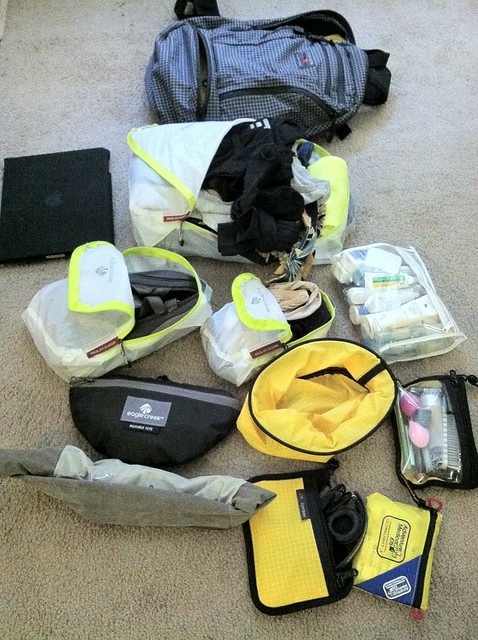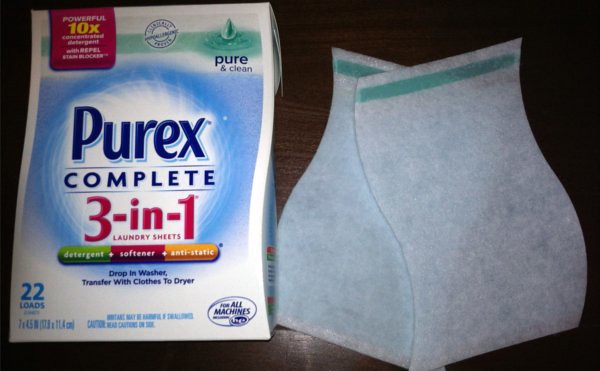Recently, a reader named Heather posted the following comment on one of my earlier posts:
Thanks for all the advice. A poster on Lonely Planets directed me to your interesting site, and I’ve just been having a browse around. They were right – great site! I’m planning on treating myself to a new carry-on suitcase for all my travels during 2012, and I’ve seen a cute [hard-sided rolling upright] “Rockland“—do you know anything about them? Worth having?
I began writing a response to her, and realized a lot of what I was saying could apply to anyone looking at getting a hard-sided rolling upright suitcase.
With a hard-sided rolling upright, you’re dealing with two primary components: That the case is a rolling upright, and that it has a hard shell. Let’s tackle the rolling upright one first.
Evaluating the rolling upright
You really cannot go to an airport these days without seeing rolling uprights everywhere. It really is the suitcase of the 21st century. These days, it’s a bit of a challenge to find travelers who don’t use one of these. Next time you’re at the airport, take a look. Those who don’t have a rolling upright? Business travelers who are traveling very lightly, with maybe just a laptop case or a small carry-on; women who only have their purse; young people who didn’t purchased any travel gear, but who are traveling with a nondescript backpack or shoulder bag; and the occasional in-touch-with-nature type with a backpack designed for hiking.
For getting around in an airport, you really can’t beat a rolling upright. It makes sense that the first rolling upright was designed by an airline pilot. If all you’re doing is driving to work (the airport), rolling your case down a smooth concourse, and then stashing your case in a reserved spot on the plane for airline crew, it makes sense to go with a rolling upright.
There are some down sides to rolling uprights. Primarily, if you plan on doing any significant walking on sidewalks, cobblestones, unpaved roads, dirt paths, or will need to carry it up or down stairs, all of a sudden that rolling upright isn’t nearly such a breeze.
Check the size of the wheels. The larger the wheels, the more stable the case will be over uneven terrain. How easily does the case turn? Does it flip when it rolls over stones? How easy is it to pull it up a staircase? Does the belly of the case scrape along the edge of each step? Is the handle long enough that you can go up the steps without being hunched over? Does it have a short extra handlebar so you can just pick the whole thing up? Is there a way to clip a shoulder strap onto your rolling upright?
In addition, the handle’s telescoping mechanism typically adds quite a bit of heft to your bag. How is your upper-arm strength? Find out how much an upright weighs, then calculate the total weight after you add your things in it… then see how nimble you can be in the tight space of an airplane aisle as you pick up your rolling upright. Imagine first pulling it up to set it on an aisle seat, and then basically doing a shoulder raise holding your rolling upright. Do you have the strength to do this for a case that might weigh 20 to 30 pounds?
Don’t forget to inspect the internal compartment of the rolling upright as well. Some cases have the telescoping handle mechanism on the outside of the case, while others give you a smooth outer line because everything’s on the inside. While the latter looks nicer, it also cuts into the amount of packing space you have.
Wheeled bags are a true modern convenience. For older people and those with bad backs, the advantages of a rolling upright trump its weaknesses.
If you’re spritely and able-bodied, however, and you travel off the beaten path—using the train from the airport to get to your hotel, traveling to less developed destinations, or even choosing to take the stairs over an escalator—then your choice isn’t so cut and dry.
Deciding on a hardshell
Heather was thinking of not only a rolling upright, but also a hard-sided model, and wanted my opinion.
Hard-sided rolling uprights have an added benefit of protecting fragile items you might pack in your case. They will also probably fare better as a check-in; baggage handlers have been known to toss bags around; a hard-sided one offers more protection. However how does it fare as a carry-on?
In my opinion, any hard-sided is probably best reserved for larger check-in cases rather than carry-ons, and here are some reasons why:
- Since a hard-sided case has no give or flexibility, it might be tougher to squeeze it into the overhead bin if your flight is very full. Airline crew may then ask you go gate-check your case.
- Many hard-sided rolling uprights keep the telescoping handle mechanism on the interior, in order to keep a smooth exterior silhouette. This means you sacrifice internal non-expandable space, or you might have to contend with odd bumps on the inside as you pack.
- Unless you get a very small case, it will likely not fit in the under the seat in front of you. This means that…
- You will likely not be able to access anything inside your hard-sided rolling upright during the flight, especially since opening the case will likely require a substantial amount of floor space since you can’t just unzip a small opening to stick your hand in to retrieve something (for example, your 3-1-1 toiletry kit, or your medicine kit).
- Even if you only pack half of the case, the hard shell means your case will still take up just as much room as when it’s full.
- You might run into space issues at your lodging—even after unpacking your case and stashing your stuff in the dresser drawers, you are still stuck with this case. Will your room have a closet you can use? This might be particularly challenging if you are traveling with another person who also has a hard-sided case, and/or you are traveling on a cruise ship, where space is a luxury (some soft-sided rolling uprights, once emptied, can be squished down and stashed under the bed in your hotel room).
If you still want to test out a hardshell case, I encourage you to go to a luggage store to check the models out in person. Test the zippers, snaps, the weight, how easily the handlebar scopes in and out, how easily the handlebar locks in place (and whether it accidentally scopes back in), how easy the case turns, etc. And don’t let the hovering sales person intimidate you. You might even want to jot down the models they have, then go home and look for online reviews to see what other people say—check for actual customer reviews and not just reviews from news sites or travel experts who are just doing a quick review based on a new product. You want to find reviews from people who said they actually traveled with the item, and writes honest feedback about what their experience was like. Places like Amazon and eBags allows customers to write personal reviews.
Finally, if you find a model you really like online, make sure whoever you buy it from has a very good return policy. Shopping for suitcases sight unseen is really tough, especially if the website doesn’t offer multiple photos from multiple angles, so you might want to go with sites like eBags or L.L.Bean that offer free return shipping. It’s one thing to pay $15 for them to ship it to you; another for you to have to pay another $15 just to send back an item you decide you don’t even want.
Swimming upstream with a soft-sided bag
All that said, my personal preference is to go with a soft-sided bag that you can carry as a shoulder bag or a backpack (with hideaway straps). In a pinch, these can even be squished into the underseat area in front of your seat, so that you never have to worry about being asked to gate-check your carry-on on a very full flight.
Sometimes I feel like salmon swimming upstream, but across all these years of travel, I’ve come to believe that the convertible travel pack is the way to go. On those occasions where I know I have to run to catch the BART train, being able to hustle wearing my carry-on as a backpack makes all the difference in the world.
There are a surprising number of manufacturers that make these soft-sided convertible travel packs—from the big companies like Eagle Creek, Patagonia, L.L.Bean, and Jansport, to the smaller boutique manufacturers like Red Oxx, Rick Steves, and Tough Traveler.
My personal favorite is Seattle-based Tom Bihn. Tom personally designs and revises each product offering, and he has a local staff that sews the items right there in Seattle. The quality of his bags are top-notch, and I’ve never had any of his items fall apart on me—the fabric never frays, the zippers never bust open. He has a small but very loyal following (try visiting the discussion forum at his tombihn.com website), and although you can buy cheaper priced bags, his bags aren’t expensive if you consider their longevity. If you do a search, you’ll find that I’ve reviewed quite a few of his products over the years.
…regardless. Rolling uprights have their rightful place in the luggage world. Hard-shell rolling uprights are a special niche. It’s not one I would personally recommend, but if you go into it eyes wide open, and take your time testing out the cases, and are willing to deal with its many disadvantages, in the end, it means you found a case that works for you! In that case, all I can say is…
happy travels!






